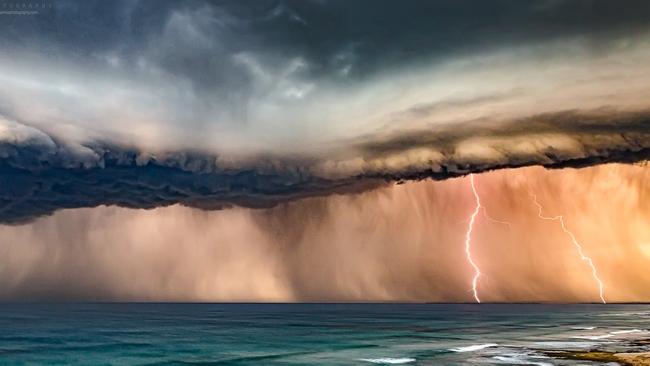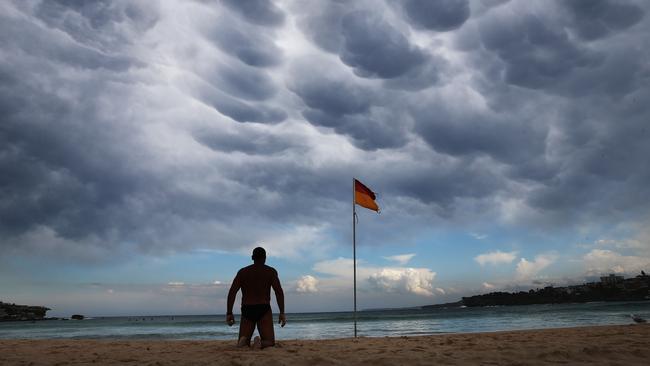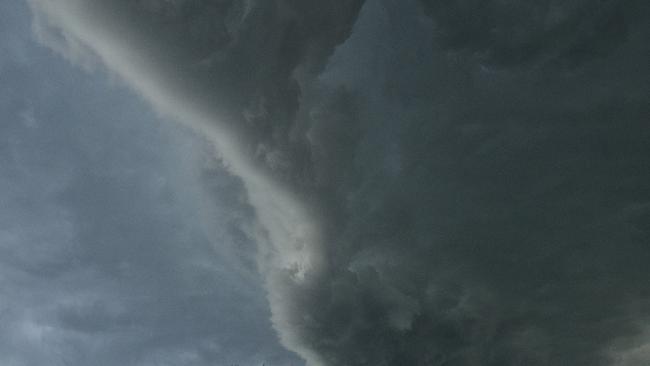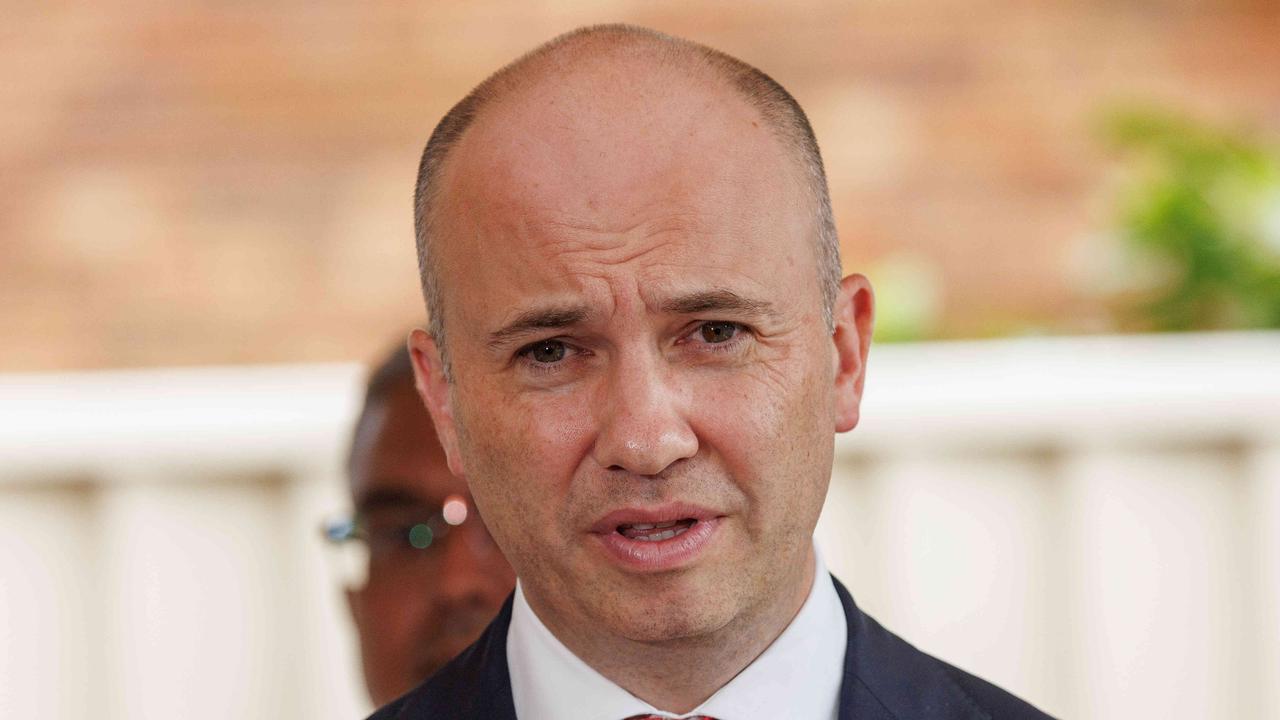The Cyclone Tracy of ideological battles: Does the Weather Bureau tweak data or is our government paranoid?
THE government says the Weather Bureau tweaks data to exaggerate global warming. The Bureau says that’s rubbish. Who’s right in this ideological storm?

DARK clouds loomed over the Bureau of Meteorology at the height of Tony Abbott’s short-lived reign as Prime Minister.
Abbott wanted the Bureau investigated. He wanted to make sure it wasn’t tweaking data to exaggerate global warming.
The Bureau said it was doing nothing of the sort. Reading through the lines of its denials in measured, bureaucratic tones, you could sense it was seething with rage at having to answer such questions at all.
But is the Weather Bureau misleading us? Or was the government yelling at clouds like Homer Simpson’s senile father? Here’s a breakdown of this Cyclone Tracy of ideological storms, which is still well and truly raging.

1. Australia’s Bureau of Meteorology is a well-respected meteorological organisation. Most of its staff are scientists who compile impartial weather and climate data by the bucketload. You can read almost all of it on the Bureau website, which is one of Australia’s 30 most clicked websites.
2. The data is actually really fun to play with. For example, did you know that Melbourne’s hottest ever day was 46.4 and its coldest ever night -2.8C? Well you would if you clicked here.
3. But some people doubt the Bureau’s impartiality. These people deny the science of climate change and reject any links between the changing climate and human activity. Mostly they are from the conservative side of politics and/or the business community.
4. These people believe the Bureau is changing its data to reflect a warming trend. This is the key point in all of this.
5. So is the Bureau altering its data? You bet it is, and for sound scientific reasons. As the Bureau explains to news.com.au:
“Temperature records are influenced by a range of factors such as changes to site surrounds, measurement methods and the relocation of stations. Such changes introduce biases into the climate record that need to be adjusted for prior to analysis.
Adjusting for these biases, a process known as homogenisation, is carried out by meteorological authorities around the world as best practice to ensure that climate data is consistent through time.”
6. So in other words, for one reason or another, weather data has to be cleaned up from time to time. It’s kind of like the way you need to raise the seat on your kid’s bike as they get taller. The Bureau calls this homogenisation.

7. If you want a concrete example rather than an analogy, here goes. Often a weather station will have been established in an area that was bush or parkland. Over the years, maybe that area became built up. Urban areas are warmer for lots of reasons. And that means the weather station must be relocated, or old records homogenised, or both. Nothing sinister there. Just sound science.
In fact, most weather stations have moved to COOLER areas (i.e. areas away from the urban heat island effect). So if scientists are trying to make the data reflect warmer temperatures, THEY’RE EVEN DUMBER THAN THE SCEPTICS THINK.
Ahem, sorry for the outbreak of capitals.
8. But some people, including Tony Abbott, see a big problem with any tinkering with raw data. Too bad if that tinkering makes past and future data reliable and meaningful. Some people smell a rat. They think it’s being done to suit some sort of agenda.
9. Tony Abbott, who was never much of a climate change science believer, had his scepticism of data homogenisation sparked by a series of pieces in The Australian newspaper.
10. First, environment editor Graham Lloyd wrote some articles about the homogenisation process which were quite critical in tone. Then Maurice Newman, chair of the PM’s Business Advisory Council, wrote an editorial in The Oz which said:
“Doctoring data or throwing inquirers off the track to deliver an outcome is unscientific and unacceptable at any time.”
And:
“[The Bureau] must first dispel suspicions of a warming bias. The memory of Climategate and its casual approach to celsius conversion, lingers. It should explain why homogenisation consistently turns cooling trends to warming.”
11. Mr Newman, who opposes wind energy and believes the earth is cooling, banged on and on about changes in the Bureau’s weather records which distorted the climate in favour of a warming trend. He ended with this line:
“Nothing short of a thorough government-funded review and audit, conducted by independent professionals, will do.”

12. Tony Abbott LOVED the sound of that. According to documents published by the ABC yesterday, his people considered a formal investigation into whether the Bureau was meddling with data to exaggerating global warming records.
13. The thing is, the Bureau’s homogenisation methodology had already been found to be 100 per cent ridgey-didge and okerly-dokerly by an independent review panel after a 2011 independent peer review of the Bureau’s data and analysis methods.
14. Then this year, the Bureau’s data analysis was again independently reviewed. This wasn’t the audit Tony Abbott wanted but just a standard cross-check. The report of the Technical Advisory Forum is here. In summary, it found everything to be both hunky and dory.
15. Not everyone accepted the conclusions. Jennifer Marohasy is a biologist, speaker and climate change science sceptic. Her website is here. It includes a post entitled “Bureau Just Makes Stuff Up”.
News.com.au asked Ms Marohasy why the Bureau would deliberately distort data. She said:
“They actually believe that all data should show global warming so they find excuse after excuse to fiddle. They’re not thinking rationally.”
Ms Marohasy then alleged that some key staff members at the Bureau were implicated in the infamous “Climategate” emails of 2009, and that these people were infecting the culture of the Bureau with their warmist alarmism to protect their own professional reputations.
16. As a refresher, the so-called Climategate affair involved a series of illegally obtained emails which purported to show manipulation of data by (mostly) British climate scientists. Multiple subsequent independent investigations cleared the researchers of such manipulation or any form of wrongdoing.
Minor scientific disagreements (of the style that are super healthy for good science) which were revealed in the stolen emails were blown out of proportion. Yet the narrative of a 2009 mass exposure of fudged climate data persists.
17. And now, a similar smell is surrounding our own Bureau of Meteorology as they try to homogenise their data in the name of good science.

WAIT A SEC. I’VE FORGOTTEN. WHY IS DATA HOMOGENISATION GOOD AGAIN?
18. Read this. It was published in the International Journal of Climatology in 2012 by Blair Trewin of Australia’s National Climate Centre.
“If a temperature data set is to be used for monitoring climate change it is important that it be homogeneous; that is, changes in the temperature as shown in the dataset reflect changes in the climate, and not changes in the external (non-climatic) conditions under which the observations are made.
Potential non-climatic influences on temperature observations include changes in local ground conditions around an observation site, changes in instruments and changes in observation procedures.
In addition, many station ‘series’ are taken from more than one location, despite often appearing under a single geographical name. Very few century-scale temperature station series are totally free of such influences, and thus careful homogenization is required in order to produce a homogeneous data set.”
19. Bottom line. Data gathering is not, in itself, perfect science. Homogenisation tries to account for that. That’s very different from doctoring data to suit someone’s agenda.
20. Still not convinced? There are absolute reams of info about how and why Australia’s climate data is homogenised here at the Bureau’s site. Most of it is really simple English.




